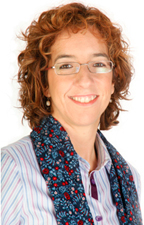


In 2007, the Durango Town Council agreed to announce the call for a scholarship to study the Toponymy of the Town of Durango.
The qualifying panel, constituted in 2008, consisted of the following members: Nerea Mujika, representing the University of Deusto; Jose Luis Lizundia, member of the Euskaltzaindia (Academy of the Basque Language) Onomastics Committee and Mari Jose Balier, chair of the Basque Language and Culture Commission; the secretary was the municipal Basque expert, Juan Antonio Atutxa.
The panel unanimously agreed to grant the scholarship to Alberto Errazti Igartua.
One and a half years later, in June 2009, Alberto Errazti delivered the material collected under the study to the Durango Town Council. It includes a total of 10,150 pieces of evidence gathered from different documentary sources: Official Gazette of Bizkaia, Historical Archive of the Diocese of Bizkaia, Archive of the Basilica of Andra María in Durango, Provincial Council Archive, Catalogue of Summits in Bizkaia, Catalogue of Caves in Bizkaia, Historical Archive of the Province of Bizkaia, the Duranguesado Regional Land Office, Durango Town Council Archive, Medieval Documentary Sources, Office of the Basque Government Deputy Secretary for Language Policy, Property Records and Archive of Santa Ana Church.
The author also consulted a long list of books: Arginzoniz, Azkarraga, Beitia, Belen Bengoetxea, Berriozabal, Errazti, Gisatsa, Gurutzi, Ibarra, Iturriza, Libano, Lizarralde, Mujika, Nestor, Romero, Sagastizabal, Olazaran, Orobiourrutia, Uriarte, Urrutia and Zabala.
Summing up, Alberto Errazti collected a total of 1,681 names of farmhouses, hills and mountains, fountains, singular buildings, churches, etc. He also made a a suggestion to change the municipal street map: some of the modifications he suggested were approved by the Plenary session, while the others are pending study.
When the time came to publish this tremendous research work, we thought that, rather than use paper as we normally would, it would be more appropriate to publish it using digital means, i.e. web format. And we have done just that in the belief that the sheer amount of the information gathered will be far more accessible from any kind of digital platform.
I also believe that the place names appearing in this website will be enormously useful to the Town Hall when naming new streets, squares, industrial estates, municipal buildings, etc., given that we will be able to make the choice based on knowledge of the names originating in the area in question. I also hope that it will be consulted and used by the hotel and catering world, shop-owners, construction companies and others in our municipality.
At the end of the day, the website on toponymy in the Town of Durango provides us with extremely valuable gems from our cultural heritage. Some will be familiar to us and are still used, while others have been somewhat shelved. We all share the task of ensuring that these names, now that they have been brought to our attention, do not escape from our memories.
Aitziber Irigoras Alberdi
Mayoress of Durango
